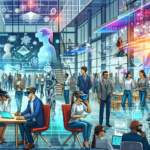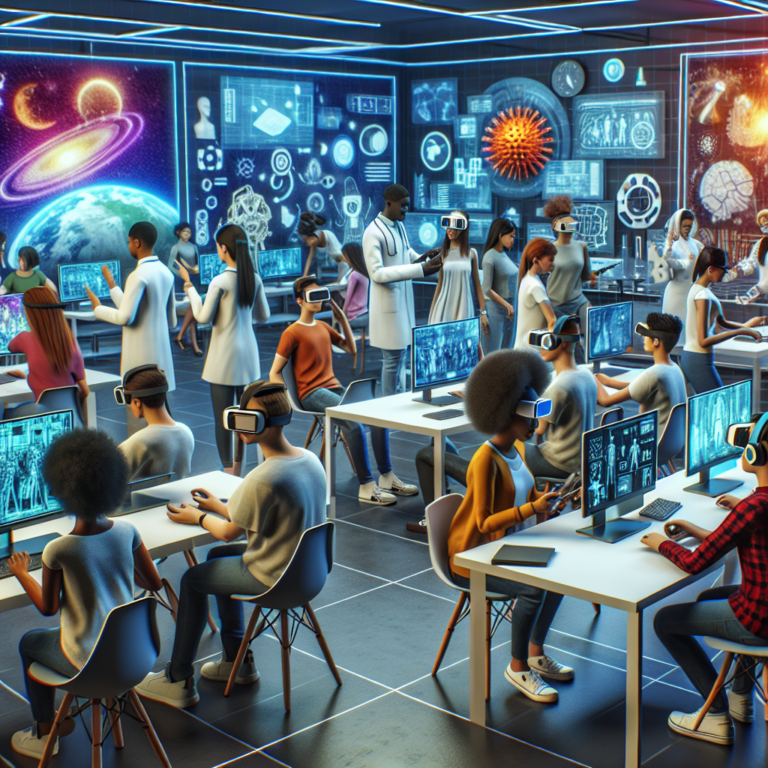The Transformative Power of Immersive Technologies in Education 🎓
Understanding Immersive Technologies
Immersive technologies, which include Virtual Reality (VR), Augmented Reality (AR), and Mixed Reality (MR), are revolutionizing the way students learn and engage with educational content. These technologies offer students vibrant and interactive experiences that go beyond traditional learning methods, allowing for deeper understanding and retention of information. The shift towards immersive learning is not just a passing trend; it’s a substantive movement reshaping the academic landscape across all subjects and levels.
The Evolution of Immersive Learning
The integration of immersive technologies in education has evolved significantly over the years. Once regarded primarily as tools for gaming and entertainment, VR and AR have proven their worth as educational aids. They foster genuine enthusiasm among students, bridging the gap between theoretical knowledge and real-world application. Here are a few notable advancements:
- Virtual Field Trips: Students can visit historic sites, museums, and ecosystems without leaving their classrooms.
- Gamified Learning: Engaging scenarios presented in game formats maintain high levels of student interest.
- Simulations: Real-world scenarios allow students to experiment without the risk of failure, like practicing surgeries in medical training.
Why Immersive Technologies Are Essential for Modern Education
Research has shown that students engage more deeply when they interact with the material in immersive environments. Here are some of the compelling benefits of utilizing these technologies in educational settings:
- Enhanced Motivation: The excitement of using cutting-edge technology encourages students to participate actively in their learning.
- Improved Retention: Immersive experiences help cement concepts in students’ minds, leading to long-lasting knowledge retention.
- Interactive Learning: Students feel present and engaged, allowing for an experiential learning process that traditional methods often lack.
- Risk-Free Environments: Students can explore complex or risky scenarios in a controlled setting, such as a virtual laboratory.
The Experience of Sheboygan Area School District
The Sheboygan Area School District in Wisconsin provides a prime example of successful integration of immersive technologies. Over the past four years, the district has embedded virtual reality into its instructional methods, leveraging the ClassVR platform. Here’s what they’ve discovered during this transformative journey:
- The district carefully selected platforms based on ease of use for teachers and compliance with legal standards like COPPA and CIPA.
- Insights and feedback from educators helped enhance the platform, leading to improvements in the dashboard and instructional content.
- Students have expressed significant enthusiasm towards AR, VR, and MR, resulting in heightened engagement and deeper comprehension of academic material.
Overcoming Challenges in Immersive Learning
Despite the enthusiasm and observable results, the implementation of immersive technology does come with challenges:
- Student Engagement Time: The district continues to monitor how long students engage with headsets to maintain a balanced learning approach.
- Motion Sickness: Addressing this concern involved careful selection of VR experiences that are manageable for all students.
- Access for All: The district has devised methods to share content with those unable to use headsets, ensuring inclusivity in learning opportunities.
The Role of Policymakers in Implementing Immersive Technologies
For immersive education technologies to reach their full potential, policymakers have a vital role to play. Their support can accelerate the adoption and integration of these technologies in educational settings. Suggested actions include:
- Investing in research for best practices regarding health and safety in immersive environments.
- Providing educators with the necessary resources to utilize AR and VR effectively.
- Accelerating the creation of immersive educational content tailored to various subject matters.
- Increasing access to AR/VR devices, ensuring that technology is available across diverse educational institution types.
Immersive Technologies in Diverse Educational Fields
The applications of immersive technologies extend beyond K-12 education into higher education and specialized training. Some prime examples of their effectiveness are:
- STEM Fields: Immersive learning helps bridge conceptual gaps and enhances understanding through practical application.
- Medical Training: Trainee surgeons can practice procedures virtually before their real-world applications, enhancing their preparedness.
- Soft Skills Development: Programs leveraging immersive environments can strengthen public speaking skills and emotional intelligence.
Data Reflecting Positive Student Engagement
Research studies evaluating the impact of immersive technologies reveal significant increases in student engagement and motivation. Though direct impacts on grades vary, the overarching theme shows a brightening landscape for learning when immersive technologies are applied:
- Participating students showcased improved engagement levels and motivation in the experimental groups using immersive technology.
- Compared to traditional learning, immersive formats foster greater curiosity about subject matter.
- A strong correlation exists between excitement towards learning and willingness to explore complex topics, thanks to immersive experiences.
The Future of Immersive Learning: AI and Beyond
As technology continues to evolve, the role of artificial intelligence (AI) in education becomes increasingly significant. The partnership between immersive technologies and AI holds the potential for even more personalized and engaging learning experiences. Anticipated advancements include:
- Tailored Learning Paths: AI can analyze student performance and adapt learning experiences to fit their unique needs.
- Enhanced Interactivity: Real-time feedback and support can elevate the immersive experience, encouraging further exploration and understanding.
- Building Collaborative Environments: AI can facilitate collaboration among students in VR spaces, transcending geographical limitations.
Conclusion
As immersive technologies develop and integrate into everyday learning, they herald a transformative shift that promises to redefine education for the better. From K-12 classrooms to specialized training environments, the possibilities are endless, shaping today’s learners into tomorrow’s innovators. The time has come for educators, policymakers, and tech developers to embrace this immersive future and work collaboratively to harness its full potential. 🌟




0 Comments